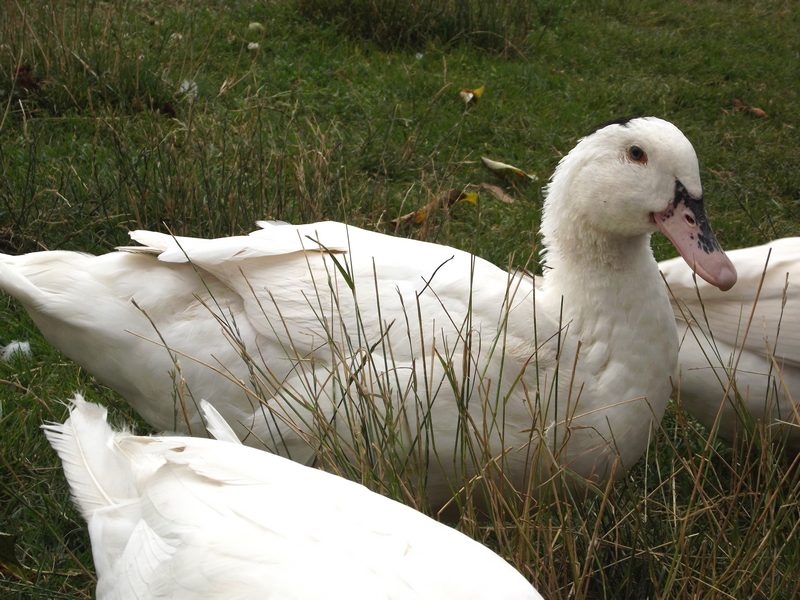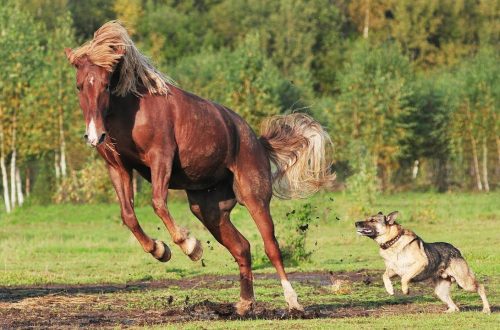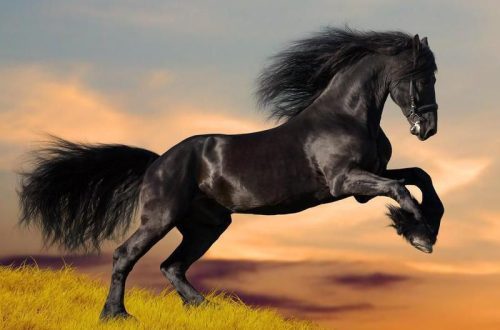
Mulard duck breed – the main features of keeping and feeding at home
Very often, the owners of their own land are interested in breeding an unusual breed of ducks – mulards, which appeared recently. If you do not delve into genetics, then this is a hybrid of an ordinary domestic musk duck, but with some individual pronounced differences.
The mularda breed is a hybrid and was bred by crossing an Indouka and Beijing poultry. Combining the main advantages of the two breeds, mulard quickly gained popularity among poultry breeders. But before you start such a duck in your backyard, you need to understand the features of keeping and feeding ducks of the mulard breed.
Contents
Features of the breed
Mulardy, as mentioned earlier, is hybrids of musk and Beijing relatives. At the same time, no matter how unscrupulous sellers prove that the breed is easy to breed at home, the mulards never have offspring. It is for this reason that it makes no sense to leave the bird for the purpose of further breeding. Despite the fact that the natural instincts of continuation are manifested in them, the fertilization of eggs does not occur. This has been repeatedly proven experimentally.
In most cases, mulard ducks are grown as a meat breed because of its high productivity. This breed is acquired for the fastest possible production of meat products. For 3-4 months the bird is gaining slaughter weight up to 4 kg or more. At the same time, the maintenance costs are the same for both mulards and Peking duck, but much more meat is obtained from the first breed. In addition, the breed can be force-fed to obtain a delicacy – foie gras.
Mulard is a duck that has a wide variety of colors, as evidenced by various videos and photos on the Internet. Such a bird can become a decoration of the household yard. The duck most often has a dark or white plumage with a distinctive spot on the head for the breed. The bird gains weight with age. In the third month of life, mularda reach almost 4 kg. At the same time, the drake was not far from the duck by weight. The maximum difference in body weight between male and female is 500 Gy.
Breeding the breed at home
Mass cultivation of mulard ducks has gained maximum popularity in European countries. Such a bird is bred to obtain an exquisite delicacy of foie gras – duck liver. Engaged in breeding breeds and at home by crossing Peking drake with Muscovy duck. At the same time, certain factors must accompany the success of the event.
- Breeding season – the most suitable time for mating mulards is the period from May to June.
- Age of ducks – mating birds should occur at 7-10 months of age.
- Conditions of keeping – it is advisable to keep a drake with 5 ducks in one paddock. At the same time, one should not expect that the duck will immediately begin to lay eggs, and the drake will surely fertilize them. First of all, the bird must get used to the new place.
- From the activity of the drake – very often the male does not recognize the white females of the Beijing breed. In order for the drake to react to the white duck, it is painted along the entire back with dark paint.
Suitable for incubation eggs collected within a week after the appearance of masonry. The offspring are bred either artificially in an incubator, or directly under the mother duck. At the same time, the natural method of hatching ducklings is much more effective than the artificial one. Well-established hens are left to breed for several years.
The nest for incubation of eggs is best located in a quiet place. A wooden box is suitable for its creation. On the bottom, without fail, you need to lay hay or straw. One hen can incubate up to 15 eggs at the same time. To finally make sure that the eggs have been fertilized, after 10 days the clutch is checked using a portable ovoscope. If eggs without vessels or with dead embryos are found, as evidenced by blood rings, they are disposed of.
Usually duck leaves his nest several times a day, due to the need to refresh and engage in hygiene. It is advisable to stir the feeder and drinker in the immediate vicinity of the nest. It is also very important that the mother hen bathe, moistening the masonry with wet feathers. If the offspring will be hatched in an incubator, then it also needs to be irrigated with water, which contributes to the normal development of the bird. The appearance of ducklings usually occurs after a month.
With natural cultivation of mulards under a hen, almost 100% birth rate is achieved. In turn, up to 40% of brood losses occur in the incubator. With normal feeding, ducklings gain more than 60 kg of weight after 3 days.
Features of feeding ducklings and adult birds
Growing ducks of the mulard breed is quite troublesome, especially if the ducklings grow without a brood hen. At the same time, it is imperative follow certain rules.
- Compliance with the temperature regime.
- Correct lighting.
- Complete and healthy food.
For the first few days, it is important to keep the lights on at all times in the duck pen. After about a week, the backlight time decreases. After 10 days, the light is turned on for 15 hours. The temperature regime in the room should fluctuate between 20-22 ° C and almost 30 ° C directly next to the heat source.
As bedding use strawsprinkled with slaked dry lime. Under no circumstances should sawdust be used as bedding, as, having eaten, their ducklings may die.
Only the hatched brood does not know how to feed on its own and therefore it is force-fed. But first you need to figure out how to feed ducklings of the mulard breed? In veterinary pharmacies, there is a wide range of kits for feeding chicks: pre-starter, starter and main food, diluted with vitamins and minerals.
Before the first feeding, experienced poultry farmers recommend giving each duckling a weak solution of potassium permanganate through a pipette. After that, a mixture of eggs and porridge is prepared. The finished mixture is scattered on a dark surface before the brood. You can scatter some of the food on the ducklings themselves so they learn to grab food that moves. Boiled eggs are added only in the first decade.
Mulard duck chicks begin to feed on their own already 48 hours after appearance. After three days, finely chopped greens are added to the feed, and after 10 days, crushed boiled potatoes.
The first 30 days of feeding, dairy products are added to the porridge. At two weeks of age, it is desirable to add duckweed to the diet of ducks. Such grass grows in swampy reservoirs, and an economical owner can catch it with a net on his own. If ducks of the mulard breed are grown by a happy owner of a land plot near a reservoir, then the bird can be released, swim, and it is enough to feed it with grain 3 times a day. A bird of one month old is transferred to 2 meals a day.
Most often used for feeding birds wheat, corn and feed. Do not neglect mineral additives in the form of chalk, eggshells, limestone and river shells. It is very useful to add grain bran, bone meal and other natural additives to the food of mulards. But the most important criterion for proper growth is the presence of a sufficient amount of water. It is advisable to keep water in deep containers, as the bird must rinse the nostrils and beak clogged with food.
Features of keeping and slaughtering poultry
The breeding process of mulard ducks is very similar to the cultivation of other domestic birds. Usually the bird is kept indoors, where the ducks feel safe and protected from the night cold and rain. At the same time, there are certain aviary and yard normssuitable for keeping poultry:
- the corral should be calculated based on 1 square meter for 3 ducks;
- the yard for walking mulard ducks is selected taking into account that 1 square meter of free space is required for one individual.
The content of ducks of the mulard breed is very profitable from the economic point of view. The bird in 60 days reaches almost 4 kg of live weight and is almost ready for slaughter. It is not advisable to grow ducks for more than 3 months, as the bird begins to shed and lose weight. Before slaughtering a bird, they stop feeding it for several hours. To easily remove the feathers from the duck, it is first scalded with very hot water, but not with boiling water.
Ducks of the mulardy breed are a meat bird, characterized by good vitality and disease resistance. Plus, the breed is highly productive, has a lot of meat, which is much tastier than other domestic birds. And, given that the meat of mulards is lean, it is better than goose meat, only now, the goose grows for 6 months. At the same time, in just one summer season, you can supply your family with meat for the whole winter.





